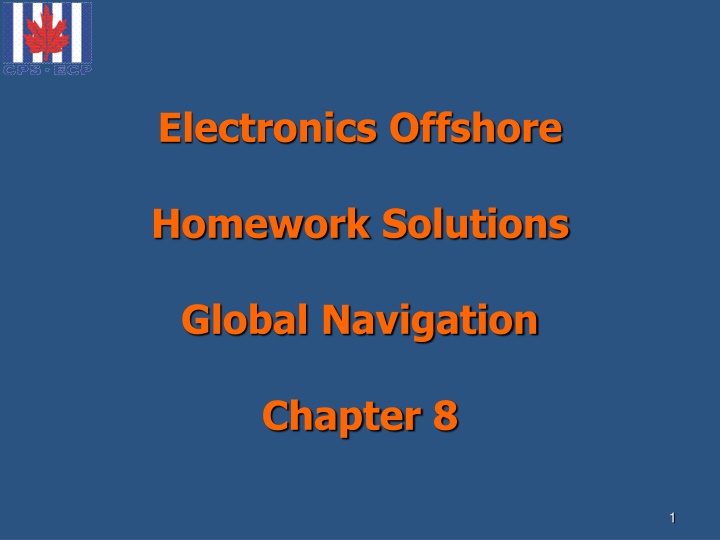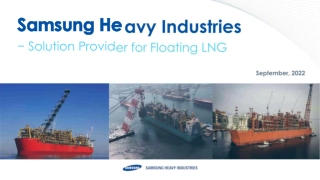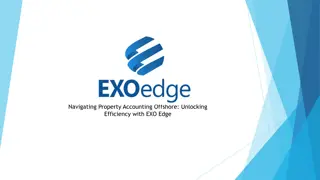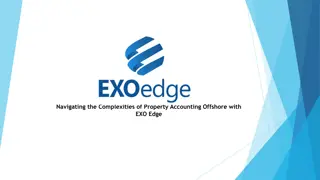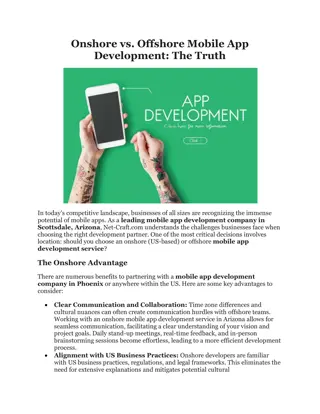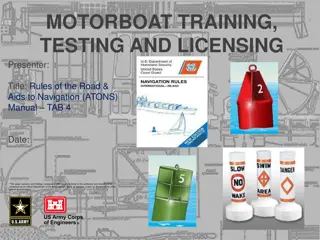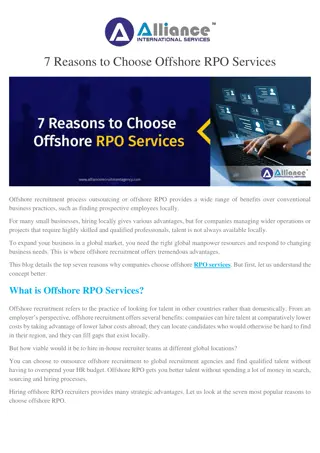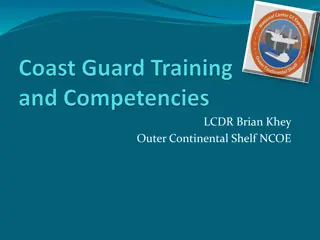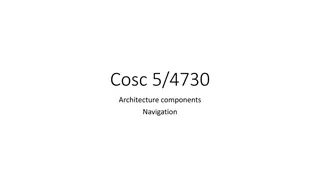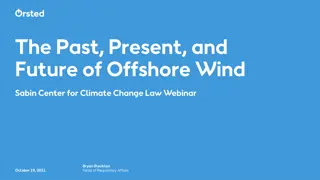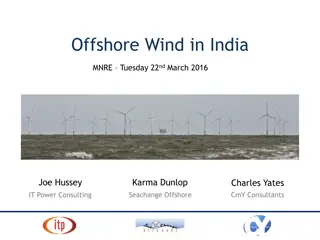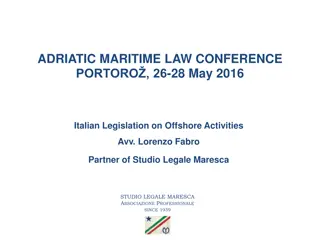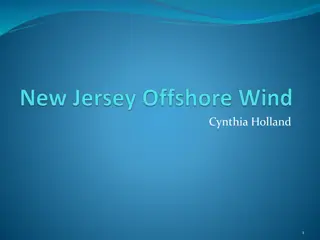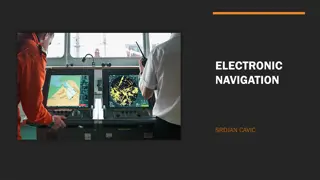Practical Electronics Offshore Navigation Homework Solutions
Learn to plan and optimize an offshore voyage using VPP2 and OpenCPN, understand AIS benefits, download necessary charts, create routes, and analyze weather data for safe navigation. Practical exercises guide you in planning cruises from convenient points to dream destinations, like New Haven, CT, to Boston, MA, during different months. Gain hands-on experience in using navigation tools effectively.
Download Presentation

Please find below an Image/Link to download the presentation.
The content on the website is provided AS IS for your information and personal use only. It may not be sold, licensed, or shared on other websites without obtaining consent from the author.If you encounter any issues during the download, it is possible that the publisher has removed the file from their server.
You are allowed to download the files provided on this website for personal or commercial use, subject to the condition that they are used lawfully. All files are the property of their respective owners.
The content on the website is provided AS IS for your information and personal use only. It may not be sold, licensed, or shared on other websites without obtaining consent from the author.
E N D
Presentation Transcript
Electronics Offshore Homework Solutions Global Navigation Chapter 8 1
Objectives Understand benefits of AIS Download and install VPP2. Install OpenCPN, with charts. Use interactive pilot chart data. Plan & optimize offshore voyage with VPP2. Transfer WPTs from VPP2 to OpenCPN. Use OpenCPN to get in and out of harbor. Import Weather GRIBS. 2
Practical Exercise -1 Plan a cruise from a departure point convenient to your home port to somewhere offshore it can be your dream cruise , or any other cruise you chose. Plan the trip using VPP2 or a pilot chart, and determine which month would be the best to make this cruise, based on the data. Create a route by entering waypoints into OpenCPN. Review the large-scale charts of the areas you ll be cruising that are available to you in OpenCPN, and select and download the charts you ll need to ensure your route doesn t take you through unsafe waters. Adjust your route, as needed, to avoid land or hazards. Answers to this Practical Exercise will vary, depending on the voyage selected. 3
Q2: New Haven, CT, to Boston, MA 2. You are planning a trip from New Haven, CT, to Boston, MA during the month of June; download the necessary NOAA charts. 4
Q2a: New Haven, CT, to Boston, MA - OpenCPN 2.a. Using OpenCPN, create a route from New Haven, CT to Boston, MA. After the first two waypoints are established, insert additional waypoints (6 to 9, depending upon your route) to 2.a. solution: The student s OpenCPN route should look similar to Figure 8-28 depending on where he/she placed the waypoints in OpenCPN chart your course around Cape Cod. Change scales as needed to see and avoid shoals. 5
Q2b: New Haven, CT, to Boston, MA - OpenCPN Depending upon the situation, the weather grib will look different. The student should understand how to download and overlay the file; note the example in Figure 8-28 2.b. Download a weather GRIB for the day of your homework. What are the current conditions near New Haven? Print a copy of your route from 2.a that shows the weather data. 6
Q2c: New Haven, CT, to Boston, MA - OpenCPN 2.c. Open the tide chart just outside New Haven. What is today s (day of homework or date specified by your instructor) tidal swing Answer: 2.c. The tides will vary by the time of the month and year, but again, the student should be able to open and read a tide file. 7
Q3a: Mobile, AL, to Port Isabel, TX-VPP2 3.a.i.1 waypoints, you observe two problems. -First, WP1 is inland, so change the coordinates of WP1 to L 30 38 N and Lo 088 00 W. -Second, you need to adjust your route to take Length: Displacement Type: % of predicted speed: route, accept the additional waypoints as part of your route. After inserting these first two 3.a.i.2. The specifications of your vessel are as follows: Vessel Name: Type: between WP3 and WP4 of this route, inserting 5 additional waypoints. When you re satisfied with the optimized leg of the added for the optimized leg of the route, should like similar to Figure 8-29 3.a.i. answer: Both distances are approximately 553 nm. The initial Great Circle heading is approximately 242 T , and the rhumb line heading is approximately 240 T. you between Dauphin Island and Point Mobile and around the southeast tip of Louisiana. Insert a new Fuel Consumption: Minimum Speed Check the box next to Set as default , and save the Vessel Profile 3. Plan a trip from Mobile, AL to Port Isabel, TX during the month of May. 3.a.i. What are the Great Circle and rhumb line distances and headings from WP1 to WP2? Solution After WP1 and WP2 are established in VPP2, hover the cursor over WP1 and read the information directly from the pop-up window that appears. 3.a.ii. Run the VPP2 optimization routine on the leg 3.a.ii. Solution: The VPP2 Mobile to Port Isabel route, with the waypoints Gulf Challenger Sail Boat 70 feet Racer 100 2,0 2,0 3.a. Using VPP2, create a route from Mobile, AL to Port Isabel, TX. WP2 at L 30 08,50 N, Lo 088 04,00 W and a new WP3 at L 28 50,00 N, Lo 088 56,00 W so that the rest of the route is in clear water. 8
Q3a: Mobile, AL, to Port Isabel, TX - OpenCPN 3.a.iii. Solution : The General Information from the Passage Summary Report for this route is as follows: - The calculated Great Circle distance and rhumb line distance are both approximately 591 nm. - Elapsed time to complete the voyage is 2,4 day. 3.a.iii. Export the waypoints of this route to a text file: Mobile to Port Isabel.txt . Print the Passage Summary report and summarize the report information. - Fuel Consumption is expected to be 0,0 units. - Your average boat speed is expected to be 10.2 kn, while SMG is expected to be 10.2 kn. (Student answers may vary, depending on where intermediate waypoints are placed.) 9
Q3b: Mobile, AL, to Port Isabel, TX - OpenCPN 3.b. Using OpenCPN, import the route. Download the charts you need for this area from NOAA. You should have charts #11301_1, #11302_1 #11376_1, and #11376_2 available for this exercise (states of FL, AL, LA, and TX). Look carefully at the Port Isabel waypoint; it seems to route you through land. Move and/or add additional waypoints to go to the Mo A buoy, south of this leg, and more to enable you to follow the S shaped route to Port Isabel. (Instructor Note: The fixed bridge clearance at Port Isabel is only 73 feet. Since your mast is likely taller on Gulf Challenger, you would not be able to proceed further into the harbor.) 3.b. Answer : The OpenCPN Mobile to Port Isabel route should like similar to Figure 8-30. 10
Modifying your OpenCPN route to Port Isabel, TX 3.b.i. Looking in detail at Mobile using charts #11376_1 and #11376_2, there is appears to be a proper route which will require adding many waypoints or turn points to follow the channel and proper side of the shipping lanes out to the Mo A buoy. Modifying your OpenCPN route to follow these curves, your revised route should look similar to Figure 8-31. 11
Electronics Offshore End of Global Navigation Chapter 8 12
